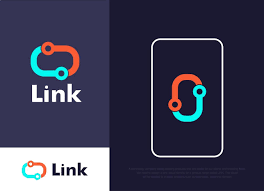Introduction
Welcome to our comprehensive guide on Imagine Learning, a powerful educational tool designed to enhance student learning and engagement. As educators, we understand the importance of utilizing effective resources to support our students’ academic growth. In this article, we will delve into the various features, benefits, and strategies for implementing Imagine Learning in the classroom. Whether you’re a seasoned educator or new to the platform, this guide will provide you with valuable insights to optimize your teaching experience and help your students thrive.
What is Imagine Learning?
Imagine Learning is an innovative educational software program that offers a personalized and interactive approach to learning. It provides a wide range of educational activities, lessons, and assessments tailored to individual student needs. With its research-based methodology and engaging content, Imagine Learning aims to promote language development, literacy, and math skills among students from Pre-K through 12th grade.
Key Features and Benefits
1. Adaptive Learning:
Imagine Learning utilizes adaptive learning technology to deliver personalized instruction to each student. The platform analyzes student performance and adjusts the difficulty level of activities accordingly. This adaptive approach ensures that students are appropriately challenged and supported at their own pace, enhancing their learning experience.
2. Multilingual Support:
Imagine Learning offers support for multiple languages, making it a valuable resource for diverse classrooms. It provides language acquisition and literacy development tools for English language learners (ELLs) and students with limited English proficiency (LEP). By catering to the unique needs of these students, Imagine Learning promotes inclusivity and fosters language growth.
3. Engaging Content:
The platform offers a rich library of interactive and engaging content, including educational games, videos, and virtual manipulatives. These resources captivate students’ attention and foster active participation, making the learning process enjoyable and effective. By incorporating multimedia elements, Imagine Learning promotes a multisensory learning experience that appeals to various learning styles.
4. Progress Monitoring:
Imagine Learning provides comprehensive progress monitoring tools for educators. Teachers can access real-time data on individual student performance, track progress, and identify areas of strength and improvement. This data-driven approach empowers educators to tailor their instruction and provide targeted interventions to support student growth.
Implementing Imagine Learning in the Classroom
1. Introduction and Orientation:
Before incorporating Imagine Learning into your classroom, it’s essential to introduce the platform to your students. Conduct a thorough orientation session where you familiarize them with the program’s features, navigation, and expectations. Create a positive and supportive environment that encourages active engagement and highlights the benefits of using Imagine Learning.
2. Personalized Learning Paths:
Leverage Imagine Learning’s adaptive learning technology by assigning personalized learning paths to your students. These paths align with each student’s skill level and progress, ensuring they receive content that meets their specific needs. Regularly review and update these paths based on ongoing assessments and student performance to ensure continued growth.
3. Differentiated Instruction:
Utilize the data provided by Imagine Learning’s progress monitoring tools to differentiate your instruction effectively. Identify areas where students may require additional support or extension activities. Leverage the platform’s built-in resources, such as printable worksheets or offline extensions, to provide supplementary materials that reinforce concepts covered in the program.
4. Collaboration and Discussion:
Encourage collaborative learning experiences by incorporating Imagine Learning into group activities and discussions. Assign tasks that require peer collaboration, such as solving problems together or discussing concepts learned through the platform. This promotes teamwork, communication, and the development of critical thinking skills.
5. Ongoing Assessment and Reflection:
Regularly assess student progress and reflect on the effectiveness of Imagine Learning in your classroom. Analyze the data provided by the platform to identify trends, areas of improvement, and celebrate student achievements. Use this information to refine your instructional strategies and provide targeted support to students as needed.
Conclusion
Imagine Learning is a powerful tool that can transform the way we educate our students. With its adaptive learning capabilities, multilingual support, engaging content, and comprehensive progress monitoring, Imagine Learning empowers educators to provide personalized instruction and promote student success. By implementing the strategies outlined in this guide, you’ll be well-equipped to maximize the benefits of Imagine Learning in your classroom and help your students thrive academically.
Remember, the key to successful implementation is ongoing evaluation, adaptation, and leveraging the platform’s features to meet the unique needs of your students. Embrace the possibilities Imagine Learning offers and embark on a journey of enhanced learning and achievement for your students.


